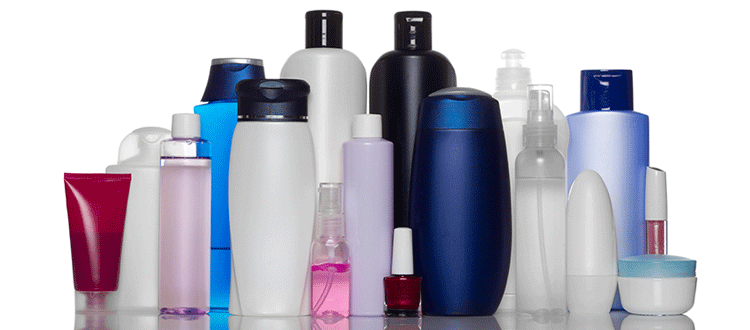Ten Simple Rules for Choosing Non-Toxic Skin Care
 |
|
Deborah Burnes |
“Paper or plastic?” This simple question at the check-out has left me paralyzed. Now that we can bring our own, the debate is over. However, it is just starting in the personal care industry. What should you avoid; what is toxic; how does it affect your health and the planet’s health; do we need to take a chemistry class to understand what is in our bottle of shampoo?
Understanding the ingredients in personal care products can become so overwhelming and confusing that we shut down. It leaves us with so much information that we cannot possibly control, let alone have the time to comprehend or decipher. The first step when trying to make changes that seem daunting—whether it is to eat better, live a “greener” lifestyle, or clean up your chemical overload from personal care products—is simple: You don’t have to be perfect. You can start to make simple changes in your daily life that will have a big impact.
The key is to do what you can and make changes that work with your lifestyle. Reducing your exposure to toxic chemicals in personal care products can be as effortless as changing where you reach on the store shelf. Here are some simple rules to live by:
1. Use less products to limit your exposure
Go through your bathroom and be honest with what you really need. I am always impressed with the amount of extra products we have and simply don’t need. One cosmetic product can have 20+ toxic chemicals. This chemical soup alone can be an overload. Mixed with the bevy of other products and their ingredients, you now have a super-sized chemical cocktail. No only do we not understand enough about those ingredients that already known to have harmful effects to our health, we know even less about what happens when we mix them all together.
2. Pick products that have more than one use
This will help you achieve your first goal of reducing products to cut down on chemical exposures, and will also reduce packaging waste.
There are so many dual uses for products. For example, next time you want to remove your makeup, try some organic olive oil. REAL soap (super fatted and made in the old fashion kettle method) works wonders as a shaving cream—and the list goes on and on.
3. Choose products with less ingredients
More does not necessarily mean better. A lot of what is on a label is either bad for you, cheap filler, or included as “window dressing” (put in a product in minuscule amounts to look good to the consumer but not in a high enough percentage to be effective). By choosing products that contain less, you will be exposing yourself to less toxins.
4. Forget about packaging
What the bottle looks like has nothing to do with performance. Don’t let a pretty package sell you. Tell yourself the truth. Look for products that use the least amount of packaging possible. Overuse of packaging is a waste of our planet’s resources and is filling our landfills. Those companies that are willing to forgo the extra sale they will inevitably get by packaging power are making a statement and taking active steps to reduce waste.
5. Don’t be sold by name-dropping
Personal care traditions are so embedded in our lives that we may not even be aware of them. Common things like, “I use Chanel #5 just like my grandmother” or consumers relating to major brand names: “It’s Prada face cream, so it has to be good.” Let go of any and all preconceived notions you currently have and allow yourself to inspect everything from an unbiased stand point. You may still wear your grandmother’s perfume, but let yourself see the naked truth—unmask your products. Try to make choices based on knowledge instead of nostalgia or marketing.
6. Come up with your own criteria of what is acceptable to you
One simple way to do this is to make a list of the top ingredients that you will not put on your skin, and find products without them. Empower yourself and at the same time send a message to manufactures with what you choose to spend your money on.
Check out my top 10 from my book Look Great Live Green.
7. Get intimate with your current products
Manufactures spend millions on what to say on this front label to get you to buy their products. With catch phrases like “all natural,” “organic,” “good for you good for the planet,” and names like “Simply Organic,” there is a sea of confusion and misleading claims, names and label jargon to decipher.
Learn to ignore the false advertising on the front label and turn your products around! All you need the ingredient list. When you see a long list of chemicals you can’t pronounce on your “all natural” cosmetic bottle, ask yourself: “Would I want to eat this?”
8. Resist the urge to buy
There will always be a new exciting miracle cream on the market, but you simply do not need it. Stick with what you know and love with familiar ingredients. Just by reducing your impulse purchases, you will reduce your exposure, save money, and reduce waste.
9. Look for fragrance-free
There are over 500 chemicals on labels listed as “fragrance” because they are protected as “trade secrets.” One common fragrance chemical, acetaldehyde (a probable human carcinogen) has shown in animal studies its ability to cross the placenta to the fetus. It also lists headaches, tremors, convulsions, and even death as a possible effect of exposure.
Limit your exposure by making sachets filled with dried citrus peels and lavender and keep them in your closets, dressers and fill a decorative bowl with home made potpourris for a room freshener. And try a dab of pierced citrus peel on your wrist for a subtle scent.
10. Pay attention to ingredient list details
Ingredients should be listed in order of quantity used in the product from most to least. This helps you determine the amount of each ingredient used.



